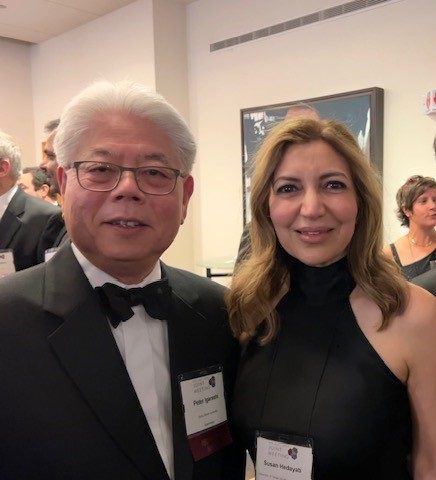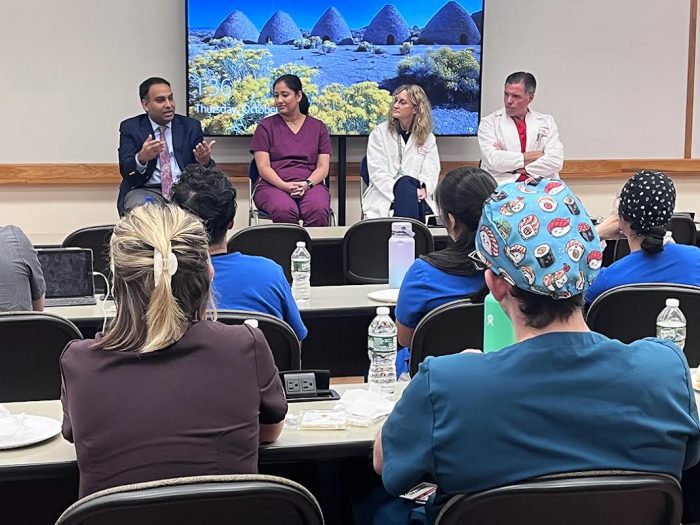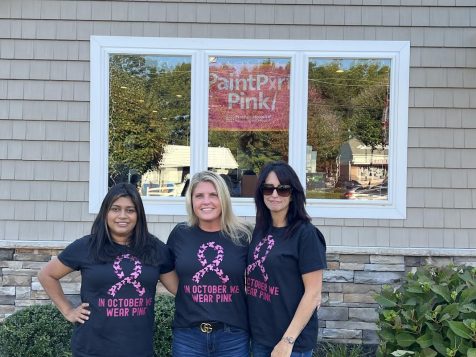She is bringing two important parts of an effective team back together.
Dr. Susan Hedayati — pronounced heh-DYE-it-tee — recently joined the Renaissance School of Medicine at Stony Brook University as vice dean for research. Hedayati was most recently a professor of medicine and associate vice chair for research at the University of Texas Southwestern Medical Center.
Hedayati plans to help improve Stony Brook Medical School’s national and international reputation by coupling frontline research with translational and patient-oriented care and studies.
The combination of a research and clinical care focus will provide for the “betterment of the health of Long Island population of patients,” Hedayati said.
In addition to enhancing clinical care, such an approach would “facilitate funding of investigator-initiated [National Institute of Health] grants and aid in the recruitment and retention of excellent M.D.-investigators,” she explained in an email.
She said she is eager to build an institutional clinical trials infrastructure that would involve a dedicated research support team.
Adding Hedayati to the medical school faculty at Stony Brook University, where she will also serve as the Lina Obeid chair in biomedical sciences, also brings two prominent kidney specialists who have different approaches to their work back together again.
Dr. Peter Igarashi, dean of the Renaissance School of Medicine and a nationally recognized nephrologist, had recruited and collaborated with Hedayati when she joined the University of Texas Southwestern Medical Center after winning first place in a clinical research award at the Southern Society for Clinical Investigation Young Investigator Forum.
When Igarashi first met Hedayati as a judge of the fellowship competition, he suggested that her expertise stood out clearly.
“She has enormous content expertise in the field of nephrology and internal medicine more broadly,” he said.
He was also impressed with her “passion” for research and her “devotion to patients and research,” which has also made her a “perfect fit” for her current position at Stony Brook University.
Combining research and clinical care will enable SBU to provide one-stop shopping at facilities like the specialty practices in Commack and the one recently opened in Lake Grove in the former Sears building at the Smith Haven Mall, he said.
Patients can receive clinical care at the same time that they can enroll in clinical trials for potential treatments of some conditions.
Hedayati “set that up at the University of Texas at Southwestern, and I’m hoping she’ll be able to grow that capability here,” Igarashi said.
Igarashi also described Hedayati, who was offered the job after a committee conducted the search, as “personable and likable.”
Complementary strengths
Igarashi described the different research approaches he and Hedayati take as “complementary” strengths.
Igarashi’s research is basic, wet lab science, while Hedayati has focused on translational and clinical research.
Their backgrounds will “be very helpful for elevating the entire research enterprise, not only in basic science but also in clinical and translational research,” Igarashi noted.
For her part, Hedayati suggested that her short-term goal is to build the physical infrastructure for clinical research and clinical trials.
Such efforts will require a clinical research staff infrastructure composed of research coordinators, research managers, regulatory personnel and biostatisticians.
“I’m hoping that, within a year, we’re going to be making some big strides in those directions,” Hedayati said.
She also hopes to build upon the existing medical scientist training program for M.D./Ph.D. students to establish a physician training program for residents to retain M.D. investigators in academic and biomedical research careers. That, she suggested, is a pool that is dwindling nationally.
Ongoing research
Hedayati, who is transferring most of her grants to Stony Brook, plans to continue conducting her own research.
She has been studying the link between chronic kidney disease, which affects about one in seven people, and other conditions, such as premature cardiovascular disease, susceptibility to depression and the role of inflammation.
“This is an area that’s prevalent, but understudied,” said Igarashi.
She is searching for nontraditional biomarkers associated with kidney function decline, especially in patients with heart failure.
Patients with heart failure are at increased risk of acute and chronic kidney failure.
Igarashi is confident that Stony Brook’s new vice dean for research will serve patients on Long Island and beyond.
“She would not have taken this job unless we assured her that she would be able to continue to see patients in the clinic as well as in the hospital,” said Igarashi. “That is a core value for her.”
Echoing those sentiments, Hedayati suggested she has a “patient-centered approach in everything I do.”






















